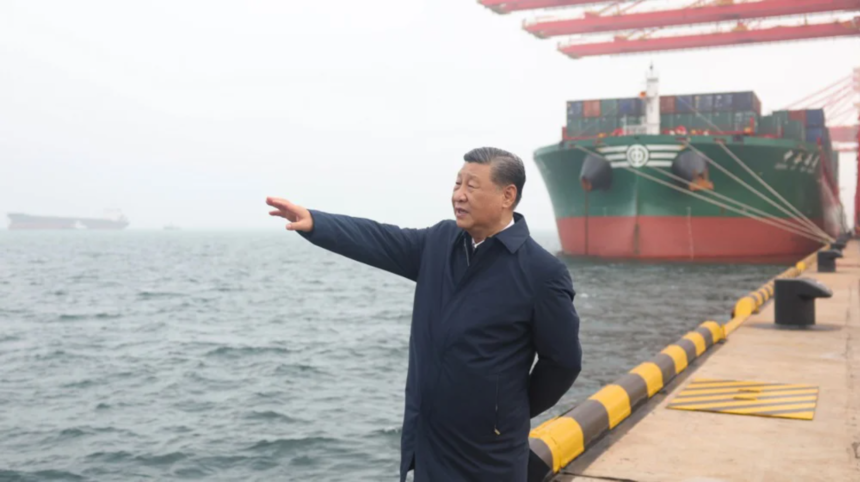Shandong Port Group, a major Chinese company, has prohibited tankers sanctioned by the United States, including Russian vessels, from entering its ports in the eastern Chinese province. This region is home to many independent refineries that are the largest importers of oil from countries under US sanctions, according to Reuters.
Last year, the port imported around 1.74 million barrels per day (bpd) of oil from Iran, Russia, and Venezuela, which accounts for about 17% of China’s total oil imports, based on data from Kpler.
The implementation of this ban is expected to increase delivery costs for independent refineries in Shandong, which are the primary buyers of sanctioned crude oil from these three countries.
In response to the ban, Washington recently imposed additional sanctions on companies and fleets dealing with Iranian oil.
The incoming US President, Donald Trump, who will take office on January 20, is expected to further tighten sanctions on Iran, similar to actions taken during his first administration.
This ban could slow down imports into China, the world’s largest oil importer, according to traders.
Shandong Port’s notice, reviewed by Reuters on Monday, prohibits vessels on the US Treasury’s Office of Foreign Assets Control (OFAC) sanction list from docking, unloading, or receiving services at the port.
Shandong Port oversees major ports on China’s east coast, including Qingdao, Rizhao, and Yantai, which serve as primary terminals for importing sanctioned oil.
In a Tuesday announcement, Shandong Port stated it expects limited impact on independent refineries, as most of the sanctioned oil is transported by non-sanctioned tankers.
The ban follows the unloading of the sanctioned tanker Eliza II at Yantai port in early January.
In December, eight Very Large Crude Carriers (VLCCs), each capable of carrying two million barrels, unloaded primarily Iranian oil at Shandong, according to Vortex tanker estimates.
The US Treasury has sanctioned these ships, including Phoenix, Vigor, Quinn, and Divine, all of which were involved in transporting Iranian oil.
An estimated 669 tankers are currently active in shadow fleets transporting Iranian, Russian, and Venezuelan oil, according to Michelle Weiss-Bokman, a senior analyst at Lloyd’s List Intelligence.
During the period between October and December, the US Treasury imposed sanctions on 35 tankers linked to Iran’s “ghost fleet,” excluding vessels operated by NITC, the largest Iranian operator, and Russia’s leading tanker group, Sovcomflot.
In early 2024, the US imposed special sanctions on Sovcomflot.
The Biden administration plans to impose sanctions on over 100 tankers transporting Russian oil, according to Reuters sources this week.
Shifting to non-sanctioned vessels could increase costs for Shandong refineries, which are struggling with low margins and sluggish demand, traders suggest.
Shares of Frontline, a leading tanker operator, surged 9% on Tuesday following news of the ban on US-sanctioned tankers.
The price of Iranian crude oil sold to China reached its highest level in years last month, as new US sanctions tightened transport capacity and increased logistics costs.
The price of Russian oil, which recently hit a two-year high, could rise further as the Biden administration plans to impose additional sanctions on Moscow due to its war against Ukraine.







